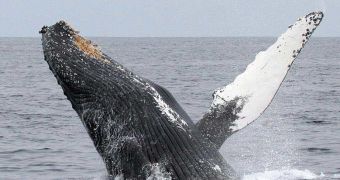According to a survey presented at the Convention on Biological Diversity (CBD), in Nagoya, Japan, it would appear that 20 percent of all vertebrate on the planet are currently being threatened with extinction.
The work also suggests that current conservation efforts are effective in curbing this trend, in the areas where they were implemented. The situation could have been a lot worse, experts believe.
This investigation was presented to international representatives on October 26 at the 10th CBD Conference of the Parties. The work suggests that wider-scale conservation efforts are needed to sustain healthy animal populations.
For this research, experts used data from the IUCN (International Union for Conservation Nature) Red List of Threatened Species, which covers some 25,000 species of vertebrate animals.
Details of the study appear in the online outlet Science Express, an advanced publication tool for the esteemed journal Science, experts at the Arizona State University (ASU) report.
Animals that made the target of this study included mammals, birds, amphibians, reptiles and fishes, researchers explain. On average, around half of all mammal, bird and amphibian species are moving closer to extinction every single year .
Studies show that the main factors responsible for this are agricultural expansion, logging, over-exploitation, invasive alien species, and other encroaching human activities.
“The ‘backbone’ of biodiversity is being eroded. One small step up the Red List is one giant leap forward toward extinction. This is just a small window on the global losses currently taking place,” says Harvard University professor Edward O. Wilson, a worldwide renowned ecologist.
“On the one hand, the results are chilling, documenting a trajectory of decline. But, these findings also demonstrate that when guided by detailed data and supported by adequate financing, conservation of threatened species and their habitats can reverse this trend,” says Andrew Smith.
The expert is an ASU conservation biologist, and also the President’s Professor and Parents Professor in the School of Life Sciences, part of the College of Liberal Arts and Sciences at the university.
He is however just one of the 174 authors of the new investigation, which included 115 institutions from around the world. Some 38 countries had representatives in the groups that elaborated this paper.
“The Red List is the gold standard for determining the threat status of the world’s biota – each species has been reviewed comprehensively by experts through a standardized quantitative process,” Smith says.
“And amazingly, this landmark study is the summation of 25,000 of these efforts from around the world,” he goes on to say.

 14 DAY TRIAL //
14 DAY TRIAL //